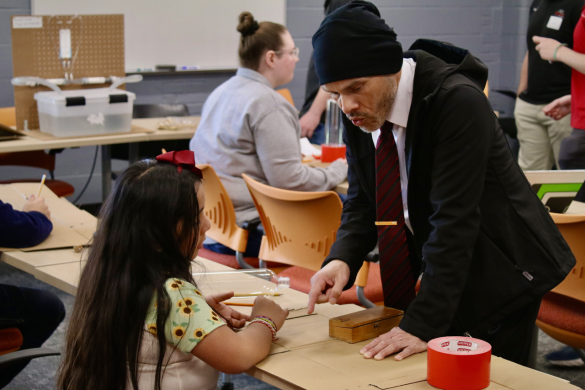University of Indianapolis Associate Professor of Physical Therapy Stephanie Combs-Miller and Boise State University Associate Professor of Kinesiology Eric Dugan recently received a research grant from the National Institutes of Health to study stroke patients and how they walk, to improve and develop techniques used for rehabilitation.
Combs-Miller has been doing stroke research for 10 years. She has been working with Dugan at Boise State for seven years on a number of projects. Combs-Miller is a physical therapist, while Dugan is a bio-mechanist, and according to Combs-Miller, the expertise in both fields has increased their capacity to conduct better studies.
“We bring both of our strengths to the table,” Combs-Miller said. “I’m very interested from a clinician’s standpoint in how we can improve and change walking patterns in people. He’s more interested in the motion, variability in motion and the measurement of it. Collectively, we bring both our areas of expertise, and neither of us would able to do [this] separately.”
According to Combs-Miller, the entire study is being conducted at Boise State unlike in previous studies that were conducted in Indiana. She traveled to Boise earlier this year to train a graduate student to take clinical measurements. Throughout the project, Dugan and the student will send Combs-Miller videos, and she will analyze data and patient outcomes.
“This is the first time we have done a stroke study together in Boise,” Combs-Miller said. “We don’t think a lot of stroke research has happened in Boise, at all, so recruitment [of patients] has been a challenge.”
For the study, Combs-Miller and Dugan are interested in the variability of movement patterns. To do this, they are using a new technology called Inertial Measurement Units, which is a sensor that can be attached to a patient. The study will then take samples of stroke patients and healthy patients, of similar age and gender, and compare comfortable walking speeds and adaptability. Adaptability will be measured by attaching a weight to one leg as the subjects walk.
“We are assuming that we will see less variability in the people with strokes,” Combs-Miller said. “[If true] this means they cannot adapt as well [as patients without stroke].”
Combs-Miller said that ideally, she would like to be in Boise for the study, but according to Dugan, the distance has not made the research more difficult.
“There are so many ways to communicate and share data and ideas that it really hasn’t been a problem,” Dugan said. “With tools like Google Hangouts and Dropbox, it is relatively easy to collaborate on projects like this.”
After completion of the study and data analysis, Dugan and Combs-Miller both plan to continue and build upon on their research. When the grant period ends in June, the two must attend a seminar and present their results, along with the other 10 projects that received the grant.
“We will likely submit another external grant, probably an NIH grant, to continue this study—hopefully, with more funding, to look at a larger sample,” Combs-Miller said.
For the current study, Combs-Miller and Dugan are looking at patients with chronic stroke, patients who have had a stroke six or more months ago. However, if they are awarded another grant, they also want to look at patients with acute stroke, patients who have had a stroke that occurred less than six months ago. Combs-Miller would like to conduct a longer study in the hope that further research would better identify people’s potential to improve their health after having a stroke.






